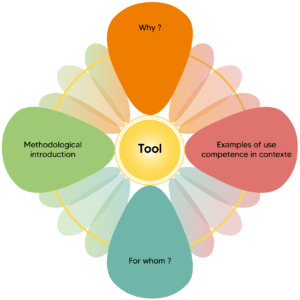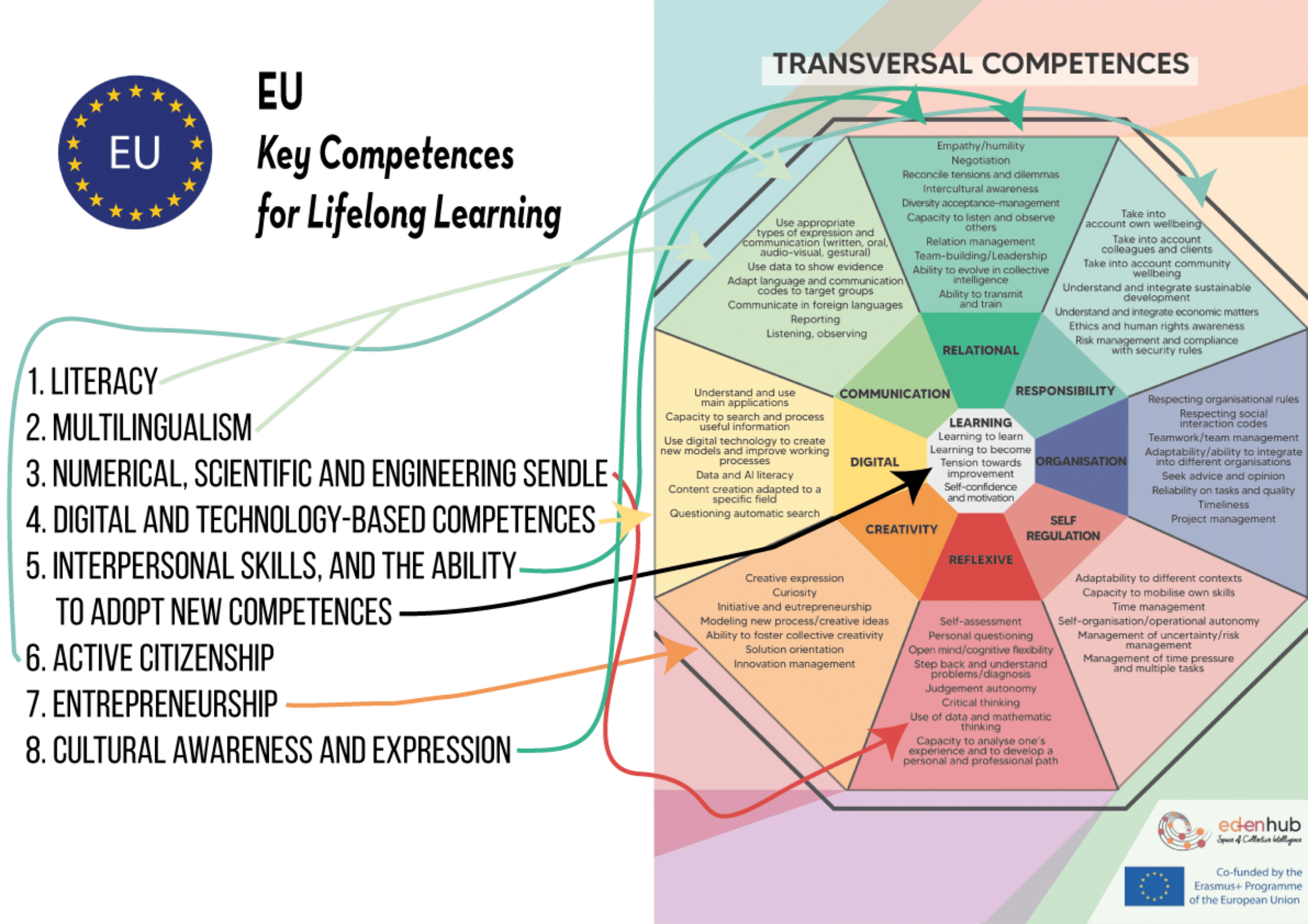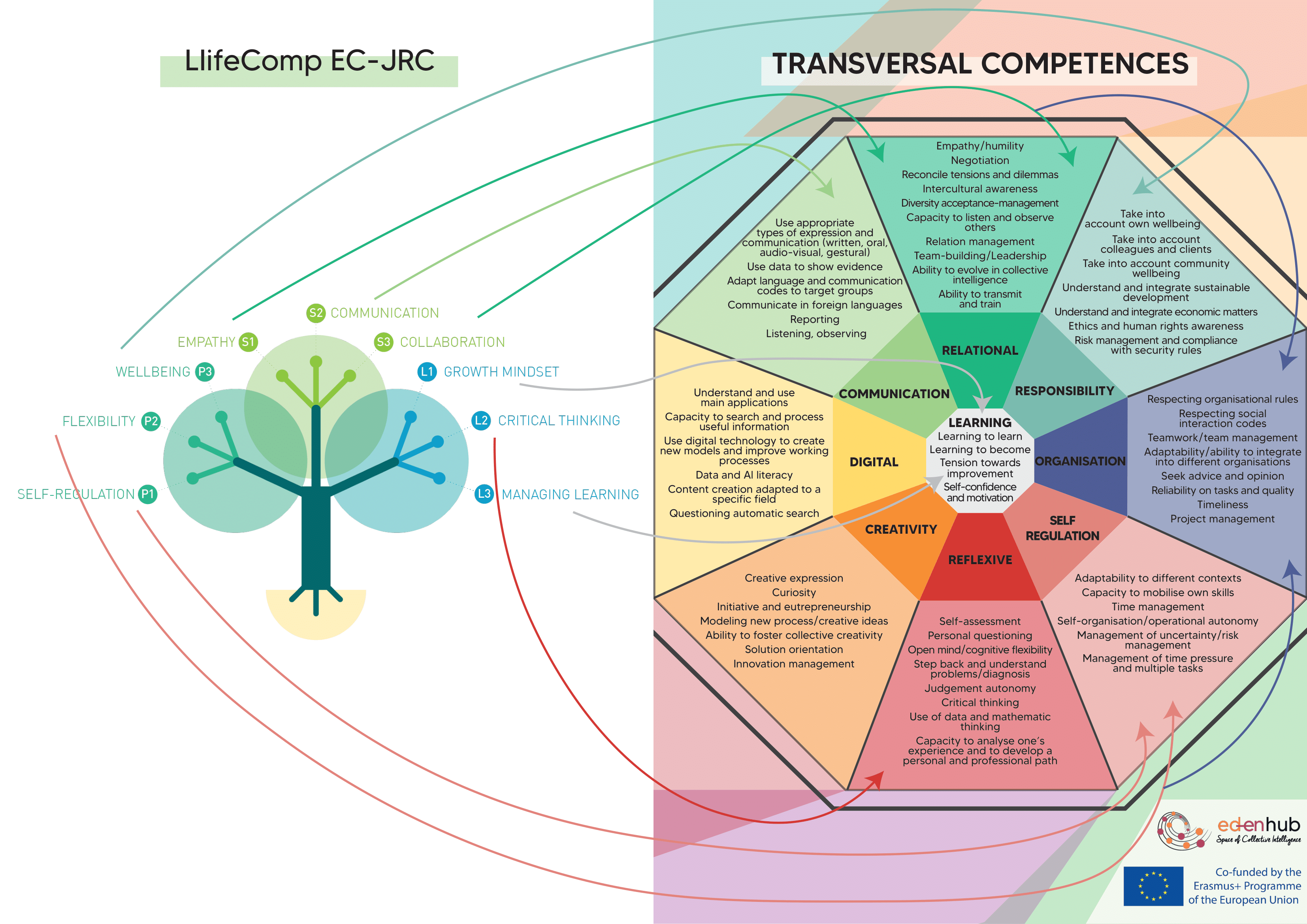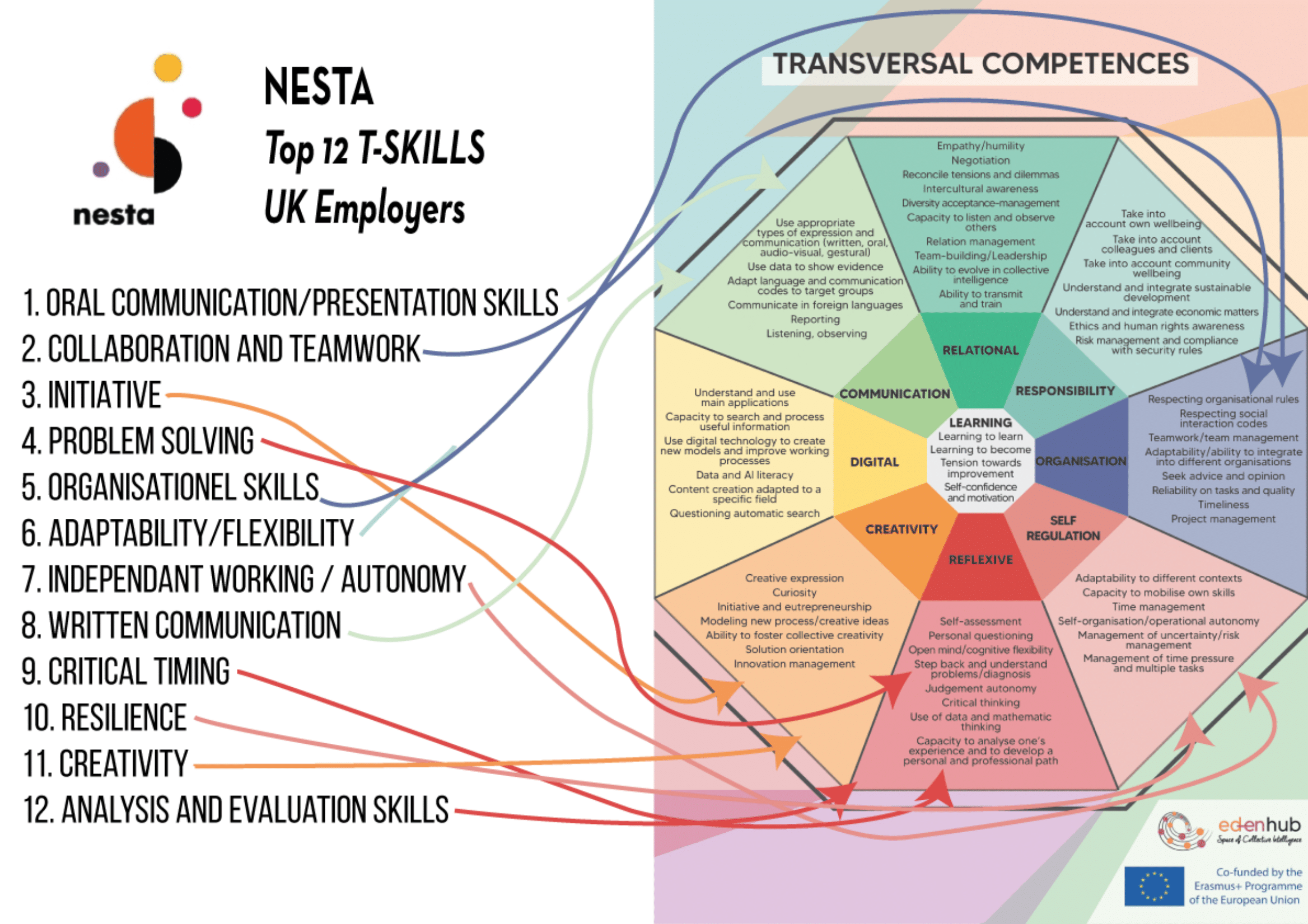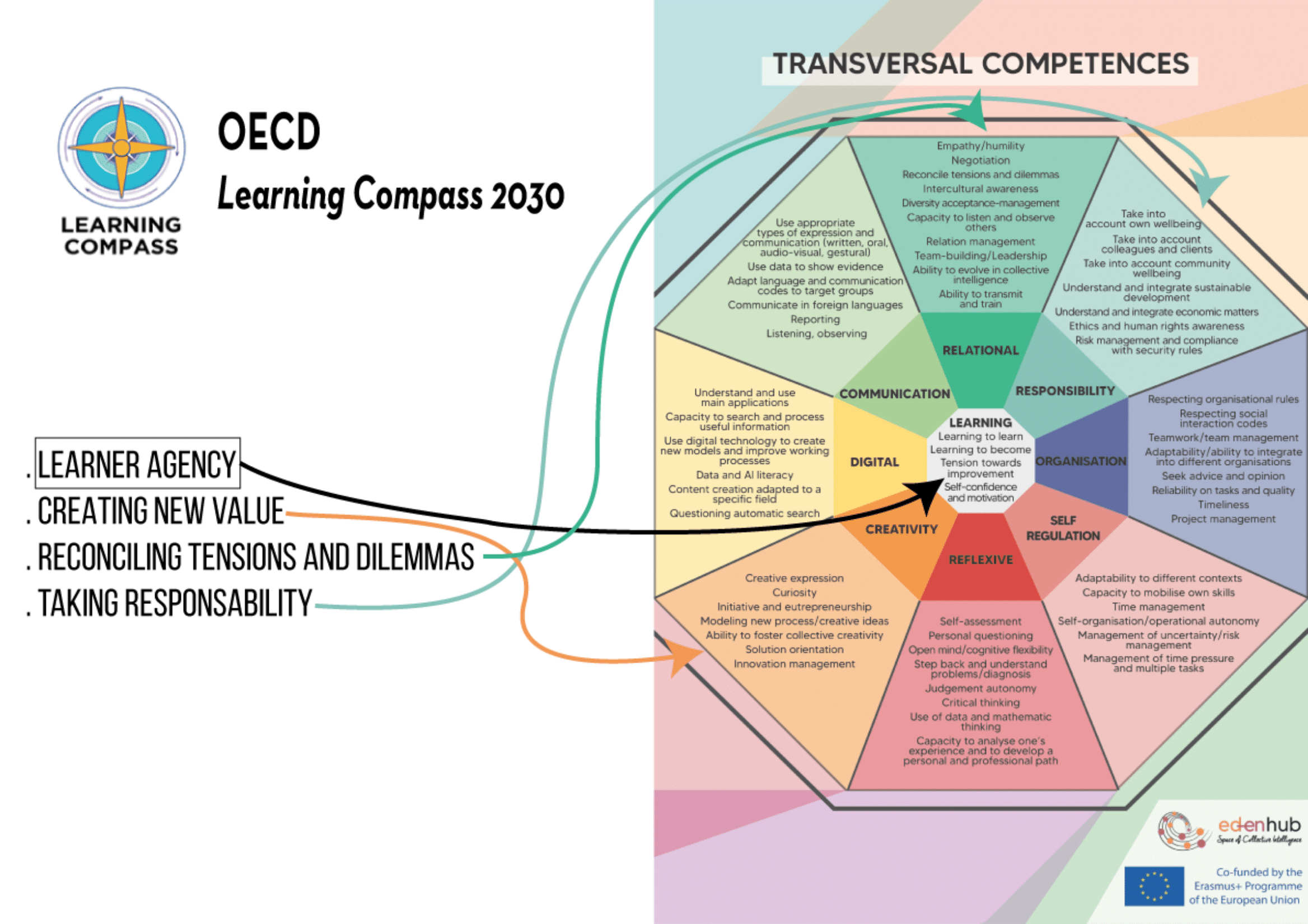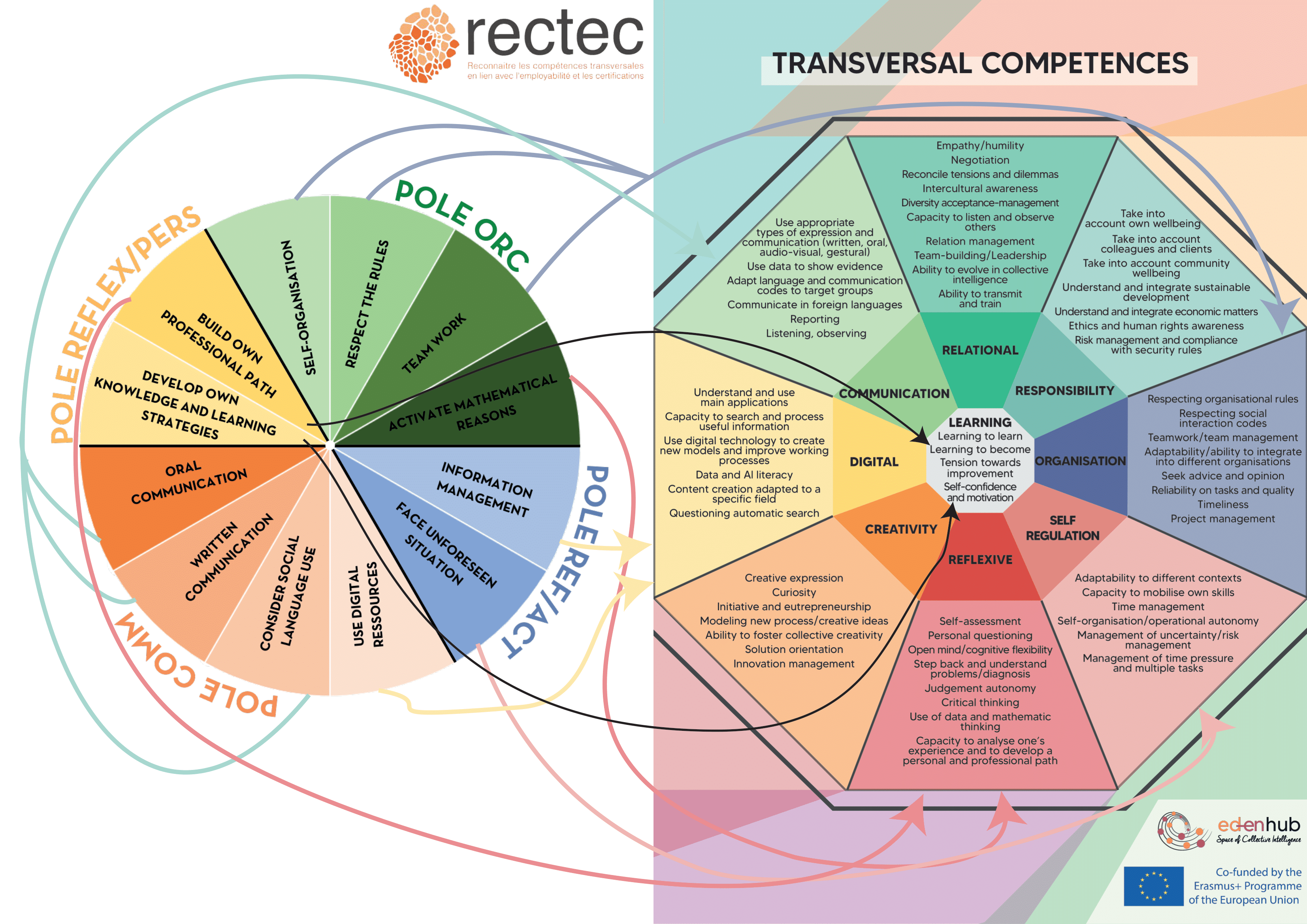INTELLECTUAL OUTPUT 1
A Toolkit for the joint development of transversal and transferable competences.
Deliverables
Four deliverables are available:
D1.0 / IO1 Toolkit: a guide, which provides a reference model, tools, and methods to define, identify, develop, and assess transversal competences in a collaborative way. This is ED-EN hub’s toolkit for the Joint Development of Transversal Competences.
D1.1 / List of Existing Tools: list of 118 existing tools dedicated to the identification, development, assessment and certification of Transversal Competences. This list analyses the points of connection with the ED-EN Hub approach.
D1.2 / Tools Attached to the Toolkit: is a summary of the tools produced during ED-EN Hub (without guidelines or detailed methodology provided in.
D1.3 / Transversal Competence Descriptions: describes the Transversal Competences used in the octagon. It is intended only as an assistance to users and facilitators, as the ED-EN Hub approach encourages spontaneous self-representation and self-positioning.
ED-EN HUB OCTAGONs
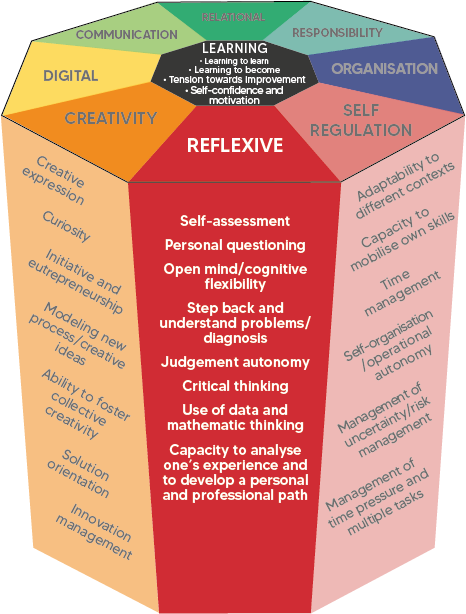
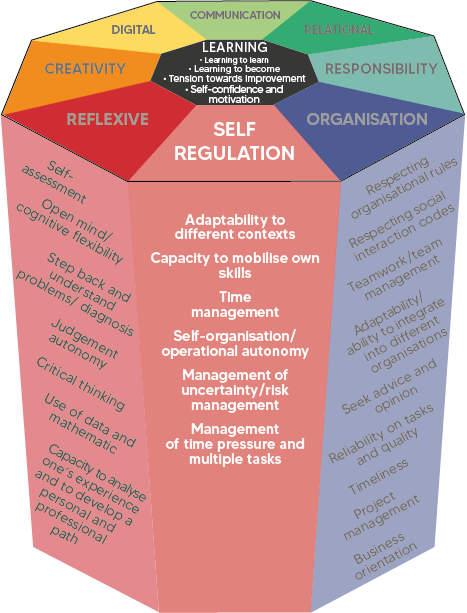
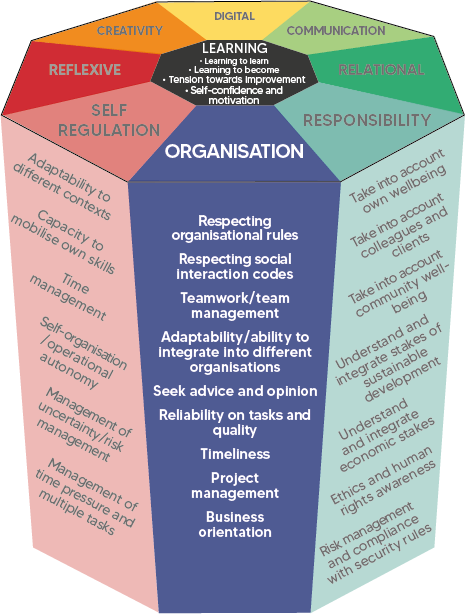
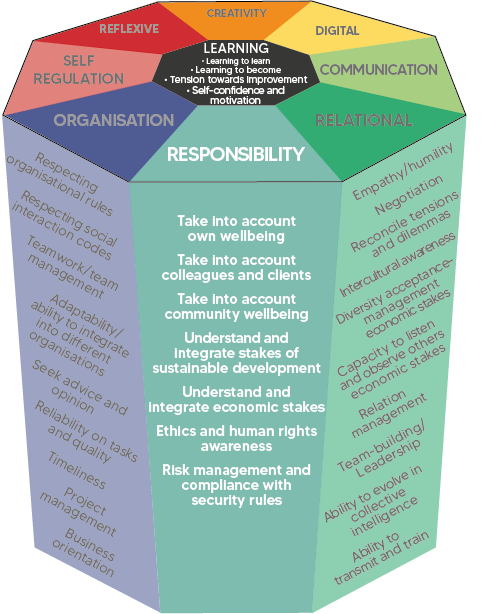

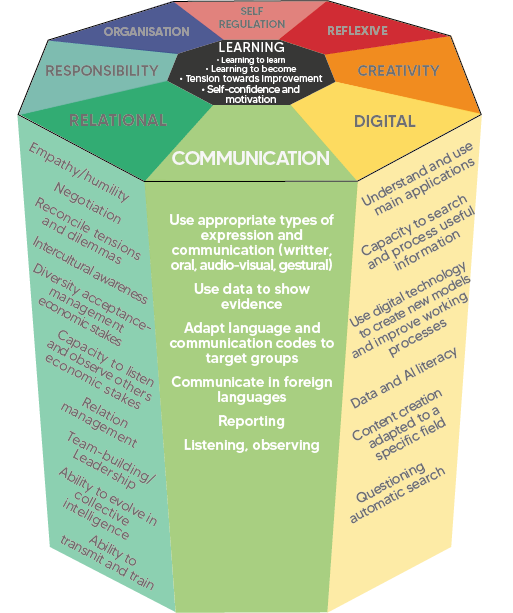
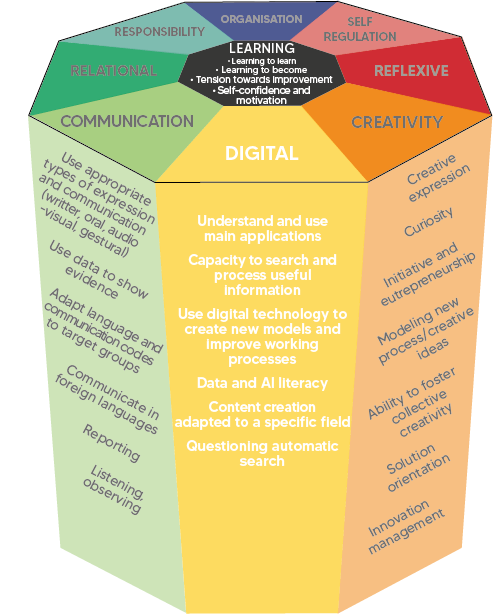
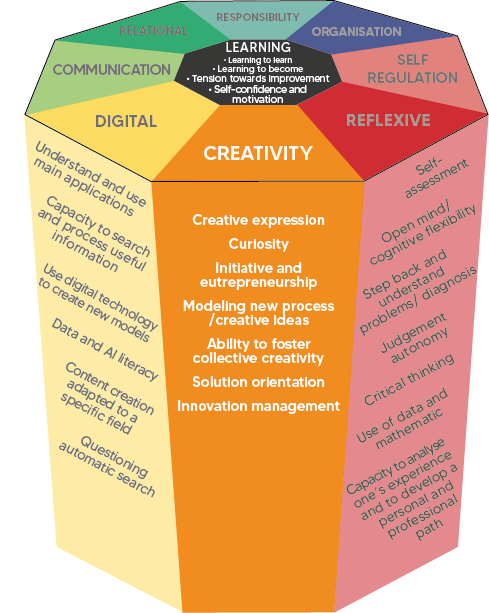
rosetta stones
Methodological Daisy
The “Methodological Daisy” is a special tool developed by ED-EN Hub to contextualize and place in perspective each suggested tool through 4 questions: 1. Why? What are the stakes of the tool? For what purpose? 2. For whom? What are the target audiences and their characteristics? 3. What are the methodological instructions? 4. Are there examples of the use of competences in context? Each petal of the daisy answers one of these questions for each tool considered, which represents the pistil, while the flower stem represents the local context. Above all, it’s a way of taking a step back from the tools and considering, primarily, their purpose and context of use.
